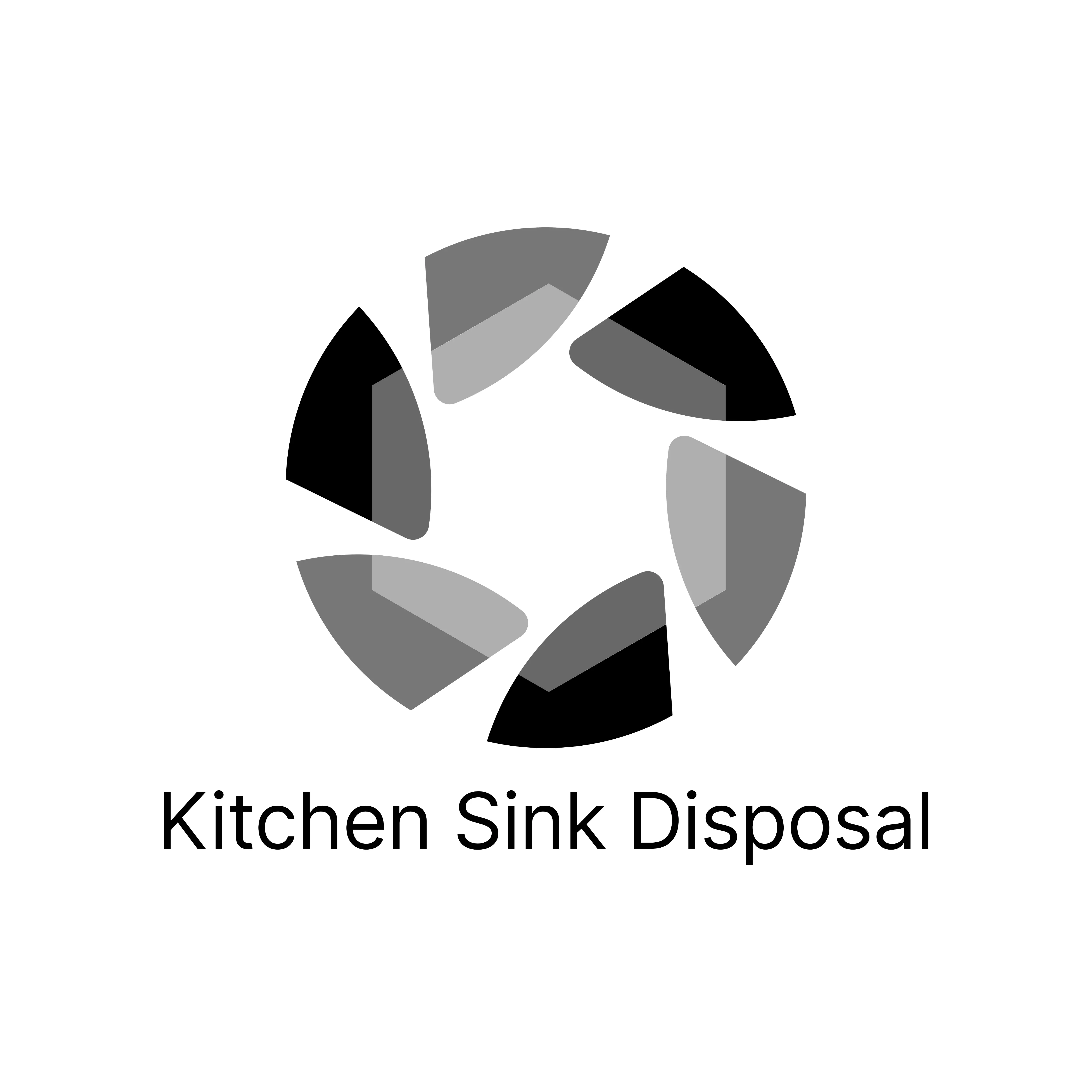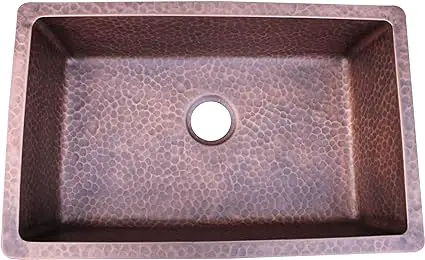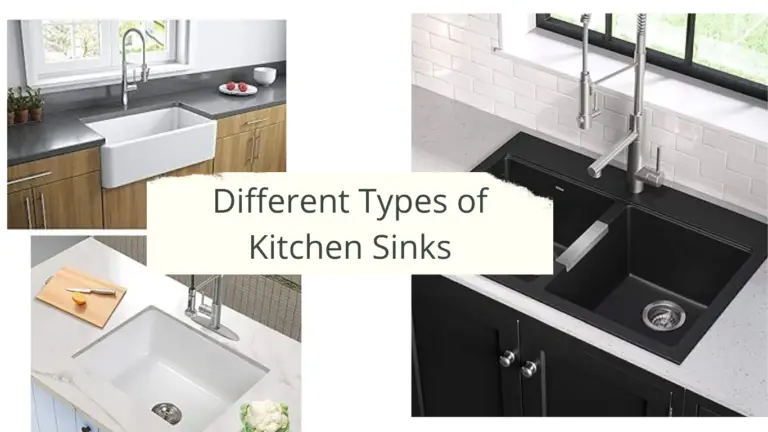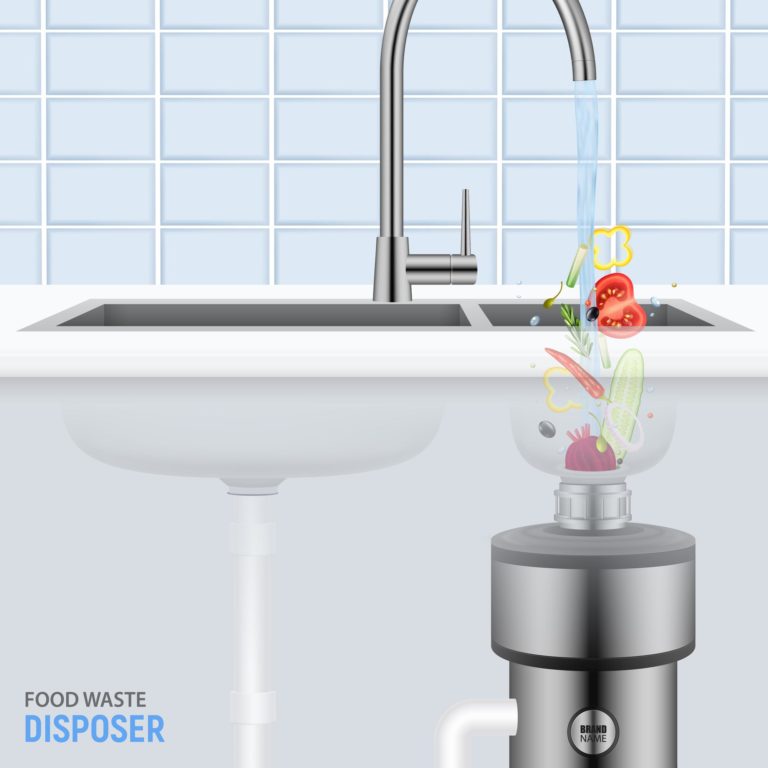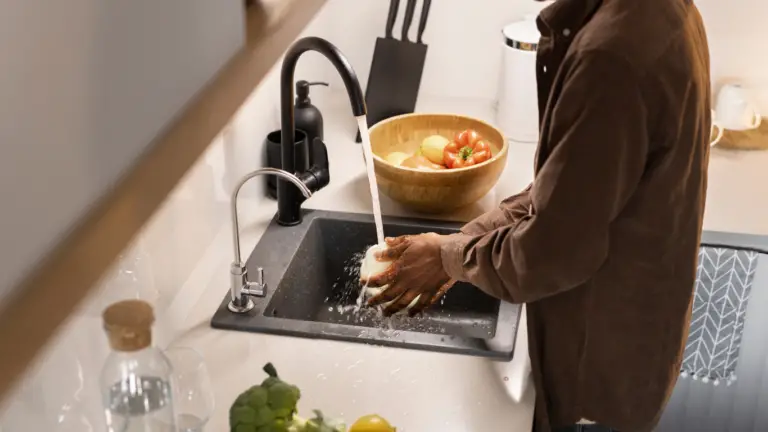Copper Sink Buying Guide; What you need to know!
This post may contain affiliate links which means I may receive a commission for purchases made through links.

Adding a copper sink to your kitchen is a great option if you want to make a bold statement in your kitchen design. After all, copper is a decorative, eco-friendly, and quite durable material. Plus, it’s much more affordable than some kitchen sink materials like marble. However, copper sinks have their set of drawbacks as well. For instance, some homeowners believe that copper sinks are unsuitable for heavy use. But is that true? In this buying guide, I’ll take you through everything you need to know about copper sink to determine if it’s the right fit for your kitchen!
What’s a copper kitchen sink?
Copper sinks are usually made by hand using copper with a bit of zinc for that extra strength. These sinks add distinct beauty and elegance to any bathroom or kitchen. After all, copper is a beautiful natural element that is lovely, unique, and easy to preserve. Even better, you can recycle copper indefinitely without affecting its tensile strength in any way.
Another great thing about copper sinks is that they provide beauty and flair to various home styles including a rustic farmhouse and a contemporary house. In addition, they enhance the house buyer’s perceptions and even increase the value of your property when it is time to sell.
Much like porcelain or stainless steel kitchen sinks, copper sinks are available in a wide range of styles and sizes. Also, you can install them in the same way as other types of kitchen sinks. For instance, you can install them as an undermount, overmount, or drop-in kitchen sink. Therefore, you can rest assured there is a copper sink in the market that will match your needs, including polished or aged copper that is ideal for use in small or large spaces.
Copper sink Patina
One of the most unique features of copper is that it develops a unique pattern (patina) over time, which is considered a living finish. Patina is a natural process that involves copper developing a protective coating when it’s exposed to water, air, and other elements. Specifically, this causes copper to develop a deep, warm brown color that darkens and changes over time.
Certain harsh or acidic items like toothpaste, lemon, or orange juice will strip the patina, returning the sink to a bright shine. However, the copper sink will self-heal and develop the patina again over time, giving the sink a rich coppery blend of dark and light tones.
Sometimes, some copper sinks may turn green. This usually occurs due to salty water, harsh environments (large temperature fluctuations and weather changes), and other outdoor factors. However, if the copper sink is properly cared for and cleaned in an indoor kitchen, green oxidation will not occur.
When buying a copper sink, it’s important to understand the patina before you commit to one for your kitchen. That way, you’ll not get caught off-guard when the natural color shifts start to occur.
Copper sink finishes
While the patina of copper sinks changes naturally over time, there are various types of finishes available. They include;
- Antique. The antique copper finish ranges from medium to light tomes and delivers a classic and timeless look. More notably, it’s one of the most popular finishes for prep and kitchen sinks.
- Naked. As the name implies, a naked finish copper sink is made up of copper at its finest and raw form. This natural form allows you to select your maintenance process. For instance, you can polish it to keep it shiny or let it age and develop a natural patina that will require minimal upkeep.
- Aged. A warm and vibrant aged copper finish ensures durability and a more consistent look to your sink.
- Verde. This copper finish is usually applied to naked copper to bring that old-world beauty to your kitchen.
Mounting styles
Similar to other kitchen sink materials, copper sinks are available in a wide range of mounting/ installation systems. The most common installation styles for copper sinks are;
-
Undermount
Undermount copper sinks are installed below the kitchen countertop, giving you a high-end look with easier cleanup and more space on the countertop.
-
Drop-in
Also known as self-rimmed or overmount kitchen sinks, drop-in copper sinks are simply ‘dropped into a precut hole, leaving the lip of the sink to sit on the countertop. This installation style is the best option for DIYers as it’s relatively easier and faster than an undermount style.
-
Farmhouse (apron-front/ farmer’s sink)
Farmhouse sinks were originally designed for ergonomics and feature a large front to create space between you and the countertop, causing less straining and leaning. These sinks can either be drop-in or undermount.
-
Dual-mount
A dual-mount copper sink can either be installed as an undermount or drop-in, giving you more versatility in your kitchen design.
Copper sink gauge
The gauge measures the thickness of the copper sink material. The thicker the copper material, the lower the gauge. Most copper sinks are made from 14 to 18-gauge solid copper as this range provides the perfect balance between function, design weight, strength, and durability.
Nonetheless, it’s important to consider the gauge of any copper sink before making the final buying decision. If the gauge is higher than 18, I’d recommend you look for a new option. This is because thinner sinks are more susceptible to dents and dings from heavy items like pans and pots. Also, these sinks generate a tinny sound when the faucet water is running, creating a noisy kitchen environment.
Are copper sinks durable?
With proper care, copper sinks can be very durable and long-lasting. After all, they’re crafted with a heavier material than their stainless steel counterparts, enhancing their longevity. This durability helps copper sinks maintain their value over time. Actually, the value of copper sinks increases over time as they develop a distinct look as their patina ages.
Another aspect that extends the durability of copper sinks is that they’re not easily dented or damaged by heavy pans or pots. However, to enjoy this benefit, you should choose a 14 gauge copper sink as they’re made with a thicker and more durable material.
The only drawback of copper sinks is that they’re prone to scratches and their smooth finishes are likely to get ‘dinged’. Other than that, these sinks are highly resistant to corrosion and rust, helping them last for decades.
Copper sinks brands
The best copper sinks in the market are manufactured by popular brands like Premier Copper, Sierra Copper, and Native Trails. Best of all, copper sinks from these brands are available in several color and finish options, making it easy to find a copper sink that fits your needs. While there are pros and cons of copper sinks, they are generally a great addition to any kitchen. Plus, copper sinks can last for several years, provided they’re properly maintained and cared for.
Are copper sinks easy to clean and maintain?
The key to extending the durability of your copper sink is ensuring you maintain it regularly. Luckily, copper sinks are extremely easy to clean and maintain, especially due to their antibacterial properties.
After all, you only need to wipe down the sink after each use with gentle dish soap, warm water, and a soft cloth. In addition, you need to clear the food debris out of the sink as needed to prevent discoloration. More importantly, you should avoid extended contact between the sink and the following items to protect its patina;
- Cosmetics (shaving cream, toothpaste, makeup, etc.)
- Acidic foods (ketchup, tomatoes, citrus)
- Oil
- Abrasive chemicals (drain unclogging chemicals, bleach, etc.)
